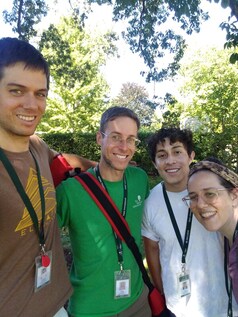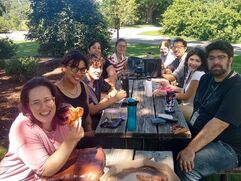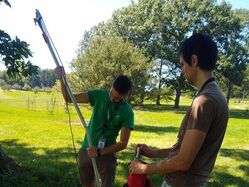Big thanks to Meghan Midgely, Savannah Henderson, Jorge Jaime-Rivera, Abigail Leeper, Marvin Lo, Karina Orozco, and Brendon Reidy for helping sterilize the research fridge last week and also to Sean Hoban, Austin Koontz, and Jorge Jaime-Rivera for helping with the pole pruning. Emily is really excited to start collecting acorns and germinating them in a few weeks! Below are more pictures taken during preparatory field work:
News
0 Comments
Leave a Reply. |



 RSS Feed
RSS Feed